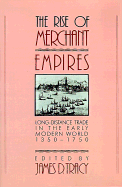Book contents
- Frontmatter
- Contents
- Preface
- Maps
- Introduction
- 1 Structural changes in European long-distance trade, and particularly in the re-export trade from south to north, 1350–1750
- 2 The growth and composition of trade in the Iberian empires, 1450–1750
- 3 The growth and composition of the long-distance trade of England and the Dutch Republic before 1750
- 4 France, the Antilles, and Europe in the seventeenth and eighteenth centuries: renewals of foreign trade
- 5 Productivity, profitability, and costs of private and corporate Dutch ship owning in the seventeenth and eighteenth centuries
- 6 The Dutch and English East India companies compared: evidence from the stock and foreign exchange markets
- 7 World bullion flows, 1450–1800
- 8 Merchant communities, 1350–1750
- 9 Economic aspects of the eighteenth-century Atlantic slave trade
- 10 Marginalization, stagnation, and growth: the trans-Saharan caravan trade in the era of European expansion, 1500–1900
- 11 The “decline” of the central Asian caravan trade
- 12 Merchant communities in precolonial India
- 13 Merchants without empire: the Hokkien sojourning communities
- Index
1 - Structural changes in European long-distance trade, and particularly in the re-export trade from south to north, 1350–1750
Published online by Cambridge University Press: 01 June 2011
- Frontmatter
- Contents
- Preface
- Maps
- Introduction
- 1 Structural changes in European long-distance trade, and particularly in the re-export trade from south to north, 1350–1750
- 2 The growth and composition of trade in the Iberian empires, 1450–1750
- 3 The growth and composition of the long-distance trade of England and the Dutch Republic before 1750
- 4 France, the Antilles, and Europe in the seventeenth and eighteenth centuries: renewals of foreign trade
- 5 Productivity, profitability, and costs of private and corporate Dutch ship owning in the seventeenth and eighteenth centuries
- 6 The Dutch and English East India companies compared: evidence from the stock and foreign exchange markets
- 7 World bullion flows, 1450–1800
- 8 Merchant communities, 1350–1750
- 9 Economic aspects of the eighteenth-century Atlantic slave trade
- 10 Marginalization, stagnation, and growth: the trans-Saharan caravan trade in the era of European expansion, 1500–1900
- 11 The “decline” of the central Asian caravan trade
- 12 Merchant communities in precolonial India
- 13 Merchants without empire: the Hokkien sojourning communities
- Index
Summary
INTRODUCTION
The European long-distance re-export trade has not yet been the object of much quantitative research for the period of the late Middle Ages and early modern period. Of course, some excellent quantitative information on Dutch and English re-exports from the seventeenth century onward is available, thanks to the work of Charles Wilson, Ralph Davis, David Ormrod, K. N. Chaudhuri, and others, but these statistics cover only the very end of the period to be examined here. Moreover, they concern European re-exports from north to south rather than the trade in the other direction, which is the subject of this paper.
In the European re-export trade from south to north, Italy for centuries was the leading power. During the late Middle Ages it became the focal point of a very dynamic urban re-export trade of Near and Far Eastern wares to the rest of Europe, a trade that in its turn stimulated all other sectors of long-distance and local commerce in Europe. The discovery of alternative sea routes to Asia around 1500 by Portugal and Spain disturbed Italy's dominant position, but it did not lead to an immediate decline of its re-export trade from south to north. On the contrary, Italy reacted vigorously and adapted its economic structure and its re-export trade, the latter regaining strength from the second third of the sixteenth century onward. In the beginning of the seventeenth century, however, Italy had to give in: not to the Portuguese or the Spanish but to the Dutch and the English, keeping for itself a role in the re-export trade from the Levant.
- Type
- Chapter
- Information
- The Rise of Merchant EmpiresLong Distance Trade in the Early Modern World 1350–1750, pp. 14 - 33Publisher: Cambridge University PressPrint publication year: 1990
- 6
- Cited by



